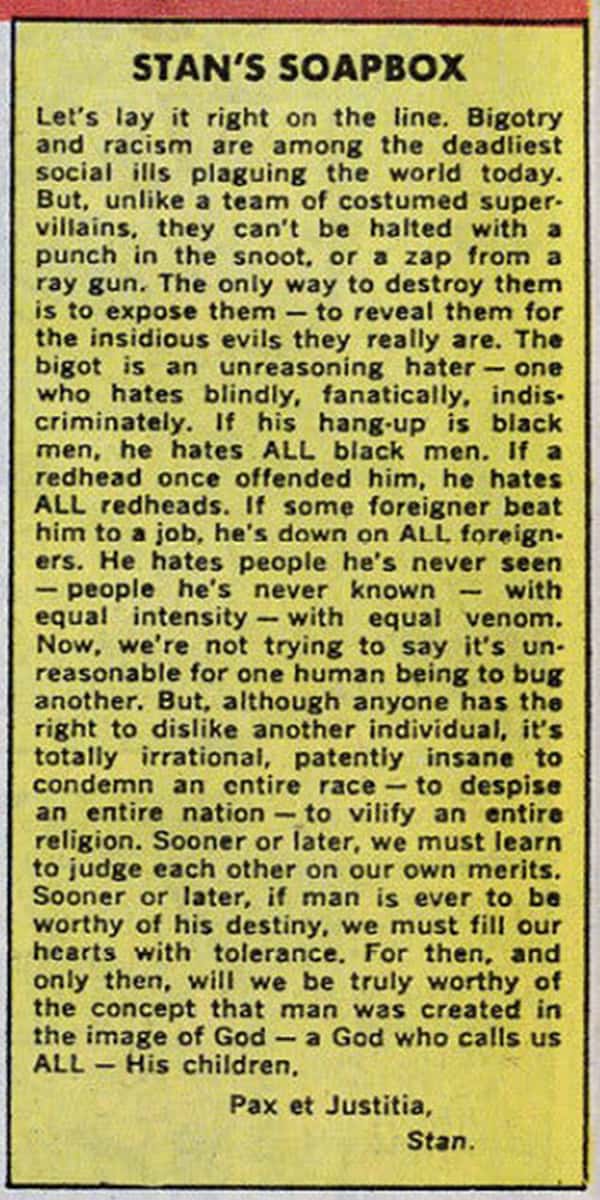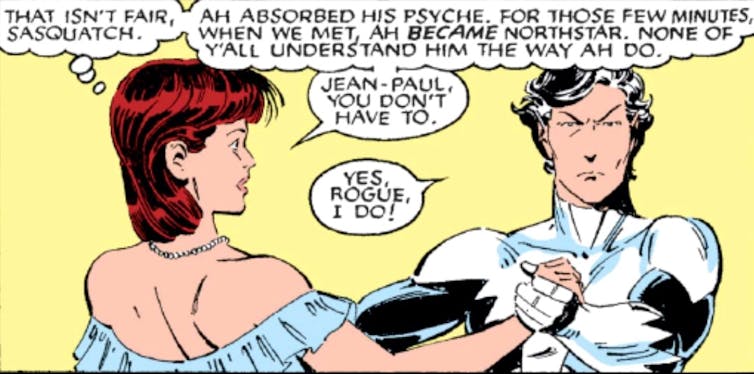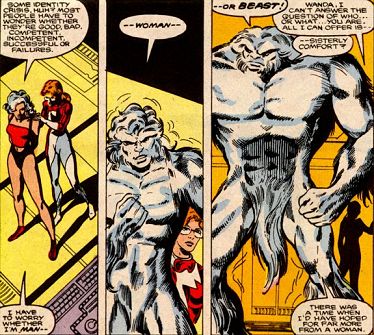Taking a glance at the highest grossing films of 1970 shows you just how much the motion picture industry has changed over the last 45 years.
Of the top ten highest grossing U.S. movies, three were films based on World War II or the Korean War. Two more were tragic romantic dramas (indeed, the top box office draw that year was the all-time champion of tragic romantic dramas, Love Story.) One was a drama about an airline disaster and another was a Western serving as an allegory for Vietnam. Believe it or not, two of the year’s ten highest grossing films were documentaries, with the only adolescent-targeted picture being a sub-par Disney animated offering.
Flash forward to 2015 and things look wildly different. To date, only one R-rated movie – the terrifically unstimulating Fifty Shades of Grey – has cracked the top ten highest grossing U.S. films list. All but two are sequels or spin-offs, and every last one of them is based on preexisting media. Moreover, while nine out of the 10 highest box office earners in 1970 were films firmly rooted in “reality,” just four out of the top ten in 2015 are sans some kind of fantasy/superhero/sci-fi dynamic – and even then, calling Spectre and Furious 7 a “realistic” work on the same level as Patton or MASH is really stretching the definition.
In all, 2015 is actually one of the more diverse years we’ve had at the cinema in a while. In 2014, there wasn’t a single R-rated film in the domestic top ten whatsoever, and virtually none of them were outside the fantasy/superhero/sci-fi genre. The same can be said of 2013, when Furious 6 was the only “realistic” film to crack the top ten at the box office. Ditto for 2012, whose sole exception was Skyfall.
Since 2010, just two R-rated films finished the year in the U.S. top 10. Only nine can be construed as “non-fantasy,” and about half of those are either James Bond or Fast and the Furious sequels.
That wasn’t the case in 1971, in which the top ten consisted of adult-oriented fare such as A Clockwork Orange, Carnal Knowledge and The Last Picture Show, plus independent non-fantasy genre fare such as Billy Jack, Summer of ’42 and The French Connection. Whereas the top-grossing film of 2015 thus far has been a third generation sequel about a theme park being attacked by computer generated dinosaurs, 1971’s top flick was a musical about a Jewish family facing persecution from Orthodox Christians in pre-Lenin Russia.

An even more adult-oriented year was 1972, in which the top 10 included The Godfather, Deliverance and Jeremiah Johnson – plus two movies, Behind the Green Door and Fritz the Cat, which played almost exclusively in adult theaters.
Seven of the ten highest earners in 1973 – a formidable list that includes The Sting, The Exorcist and Last Tango in Paris – were all rated R or X, with the only fantastical, adolescent-targeted films being Robin Hood and Live and Let Die (and maybe Paper Moon, but considering it’s a film about con artists in the Great Depression, the term “fantastical” and “adolescent-targeted” are rather ill-fitting.)
So what happened to between 1974 – in which the race-baiting satire Blazing Saddles, the Mafiosi masterpiece The Godfather 2 and the jailhouse “comedy” The Longest Yard were tops at the box office – and 2014, in which the cineplex was ruled by Transformers, Hobbits and a whole host of Marvel superheroes?
Well, the great commodification of film happened – and no movie is guiltier of transforming cinema from “art” to “industry” than Star Wars.

George Lucas’ venerable franchise is more than a film series. Indeed, it is a literal merchandising empire, a borderline cult of materialistic excess so ubiquitous, it might as well serve as the unofficial religion of the Millennial generation. Before the 1977 film, the idea of movie merchandise was still something of an alien concept, but in the wake of its mass marketed success, the entire Hollywood model has shifted. Star Wars, in tandem with the rise of the Spielbergian fantasy, killed the idea of filmmaking being a profit-generating artistic medium for adult consumers; seeing endless dollar signs in the form of juvenile-targeted consumer wares – branded tee shirts and action figures and lunchboxes, oh my! – Hollywood abandoned its focus on mature subject matter to churn out an endless stream of family-friendly – and consumer-driven – features.
The Star Wars effect is readily apparent. Since its release, only a handful of years has the top grossing U.S. box office flick been outside the merchandise-friendly “fantasy” zone. The Kramer vs. Kramers and Fiddler on the Roofs of the 1970s soon gave way to the E.T.s, Indiana Joneses, Ghostbusters and Batmen of the 1980s – all of which were heavily commodified films extensively marketed to children through an unending stream of toys, video games and fast food tie-ins. The resurgence of Disney in the early 1990s only intensified the medium’s regression from socially conscious adult entertainment to unabashed, kid-exploiting consumerist enterprise. By the time the 2000s rolled around, the mass marketed movie machine had gotten so fine-tuned that really, the films themselves became nothing more than $200 million commercials for branded goods – lest we forget the all-out marketing blitzkriegs for Shrek, Spider-Man, The Dark Knight and virtually every Disney movie produced from Toy Story onward.
That’s not to say that these fantasy-tinged films cannot be entertaining, if not flat out tremendous popcorn cinema. I’ll readily admit that corporatized, mega-marketed offerings like Spider-Man 2, Burton’s Batman and Toy Story 3 are among my all-time favorite movies, but therein lies the problem; because of their remarkable financial success – again, little more than an excuse to merchandise, merchandise and merchandise some more – Hollywood no longer has a financial incentive to mass-produce more adult fare. Sure, we may get the occasional Wolf of Wall Street and Zero Dark Thirty, but we’re certainly seeing far less of these types of films – firmly catering to adult tastes, sans any fantastical elements and without mass merchandising ambitions – and far, far more hyper-consumerist dreck. Even studio bankrolled “experimental” movies like Fight Club and American Beauty would be virtually unsellable in today’s market – why risk the revenue loss, when Ice Age, Alvin and the Chipmunks and G.I. Joe sequels are guaranteed to make a mint no matter how uninspired they are?

The Force Awakens – regardless of its quality as a motion picture – is going to make a ton of money for Disney. It’s guaranteed to generate at least $1 billion in the worldwide box office, and then there is the money they stand to make off licensed products; in 2015 alone, the Hollywood Reporter estimates the company Mickey Mouse built will reap in a hefty $5 billion from Star Warslicensed consumer goods.
While it’s not the only pop cultural franchise guilty of the transgression, no media franchise has done as much to infantilize adults as the Star Wars industrial complex. The associated “fandom” encourages men and women to regress to a juvenile mindset, with a particularly needless penchant for compulsive collecting. It becomes a part of one’s vernacular, to the point where it stops being a niche interest and becomes an actual orthodoxy. For millions of people, Star Wars is indeed a philosophy onto itself – a philosophy, mind you, built upon a bedrock of puppets, Buck Rogers-caliber melodrama and an utterly formless, and hardly original, Manichean “story” that’s no more nuanced than your average Brothers Grimm fairy tale. I am reminded of Vincent Canby’s review of The Empire Strikes Back – “It’s a big, expensive, time-consuming, essentially mechanical operation,” the esteemed New York Times critic penned, “about as personal as a Christmas card from a bank.”

It seems only fitting that Star Wars – the megalithic pop culture juggernaut that destroyed the New Hollywood Movement – would eventually wind up under the control of the Walt Disney Company, the overarching cultural dictator whose crude uber-consumption Tao has turned an entire generation into a throng of reality-averse, 20-something children. If the deluge of Star Wars branded trinkets – would you believe they are selling Jedi eye shadow and Empire ice cream? – hasn’t clued you in to the true purpose of The Force Awakens’ existence, perhaps the factory-produced Pavlovian hype that tangled up Fandago’s web servers will. Disney said everybody buy their tickets online at one time, and by golly, the masses did exactly as they were told. In a recent interview, director J.J. Abrams even came out and said the script was written in accordance to marketing demands – to cater to audiences that haven’t been sold on the product in the past, he intentionally made the film’s new protagonist female. As fate would have it, he said so on Good Morning America – the infotainment propaganda machine on a network owned by, who else, Disney.
Even allegedly “adult” franchises have taken a cue from the Star Wars juvenilia strategy. Despite the death, destruction and depravity featured week-in and week-out on programs of the sort, one can walk into any Hot Topics or Best Buy in the country and waltz out with a small treasure trove of Breaking Bad action figures, The Walking Dead board games and Game of Thrones bobble heads dolls … pending, of course, you have no qualms departing from your disposable income for the needless sake of “fandom.”
Peering back at 2016’s movie releases, the Star Wars effect – pardon the pun – is in full force. The slate is glutted with merchandise-first cash grabs – Batman vs. Superman, Captain America, The Angry Birds Movie, The Jungle Book, Kung Fu Panda 3 – plus unnecessary, “nostalgia”-driven reboots Ghostbusters, Independence Day, Star Trek, Jumanji – and supposedly “adult” retreads – Ride Along 2, the Fifty Shades sequel, another Bridget Jones, The Purge 3. Call me cynical, but I highly doubt the penmen and penwomen behind these films were motivated by anything other than a seven-figure check – nor do I imagine the film companies producing them have any nobler endeavors than to make cash hand over fist.
The glut of infantile offerings – another X-Men, another Ninja Turtles, another Barbershop – comes with a steep price. For every Star Wars inspired commodity film, we’re deprive of one film that actually has something profound to say about the human condition. Awash in a sea of Minions, Avengers and Peanuts, high-quality works like The Look of Silence, The Gangs of Wasseypur and Chi-raq – the last one a film made by a multiple-time Oscar-nominee – are pushed out of mainstream cinemas. The more money these commodity movies make, the less likely big studios are to try their hands at something that’s not meant to sell shirts and video games, something that isn’t rooted in fantasy-sci-fi-comic-book hokum or something that, in any form, appeals to adult sensibilities.
Star Wars and its kin – Harry Potter, Twilight, The Hunger Games and virtually all Marvel or D.C. movies – are not designed to enlighten or intellectually stimulate. Instead, they are meant to suck you in with familiar sights and slam-bang visuals; perhaps there is some furtive social commentary going on, but that these franchises are so far removed from our own reality saps them of any true humanity. Lovable they may be, we’re not wizards or vampires or crossbow-wielding rebels or lightsaber carrying dissidents or super-powered beings – they are not a reflection of us, and their stories are not reflections of our cultures.
Despite so many hot-button issues going on in contemporary society – racial politics, LGBT identitarianism, the ramifications of globalization, the effects of technological integration, etc. – Hollywood seems strangely unconcerned about addressing these issues in today’s films. Pre-Star Wars, mainstream Hollywood films were extremely political and social in nature, and apparent by the success of American Sniper and Straight Out of Compton, contemporary audiences DO have a desire to see films that break out of the hyper-consumerist, fantasy-world fishbowl. But again, why bother dealing with fare that reflects our real world and our actual humanity, especially when that stuff doesn’t translate well to beach towel iconography and Xbox One games?
That’s the lasting legacy of Star Wars, and the ultimate message of this latest movie. As a culture, we’ve gleefully sacrificed meaningful art for inconsequential amusement, thoughtful reflection for thoughtless entertainment and introspective commentary for infantile escapism.
The “force” may be strong, but judging from the overwhelming, transnational, transgenerational success of the Star Wars merchandising machine? It appears our collective intellect is anything but.

The post Why Star Wars Ruined Filmmaking appeared first on HalfGuarded.





































